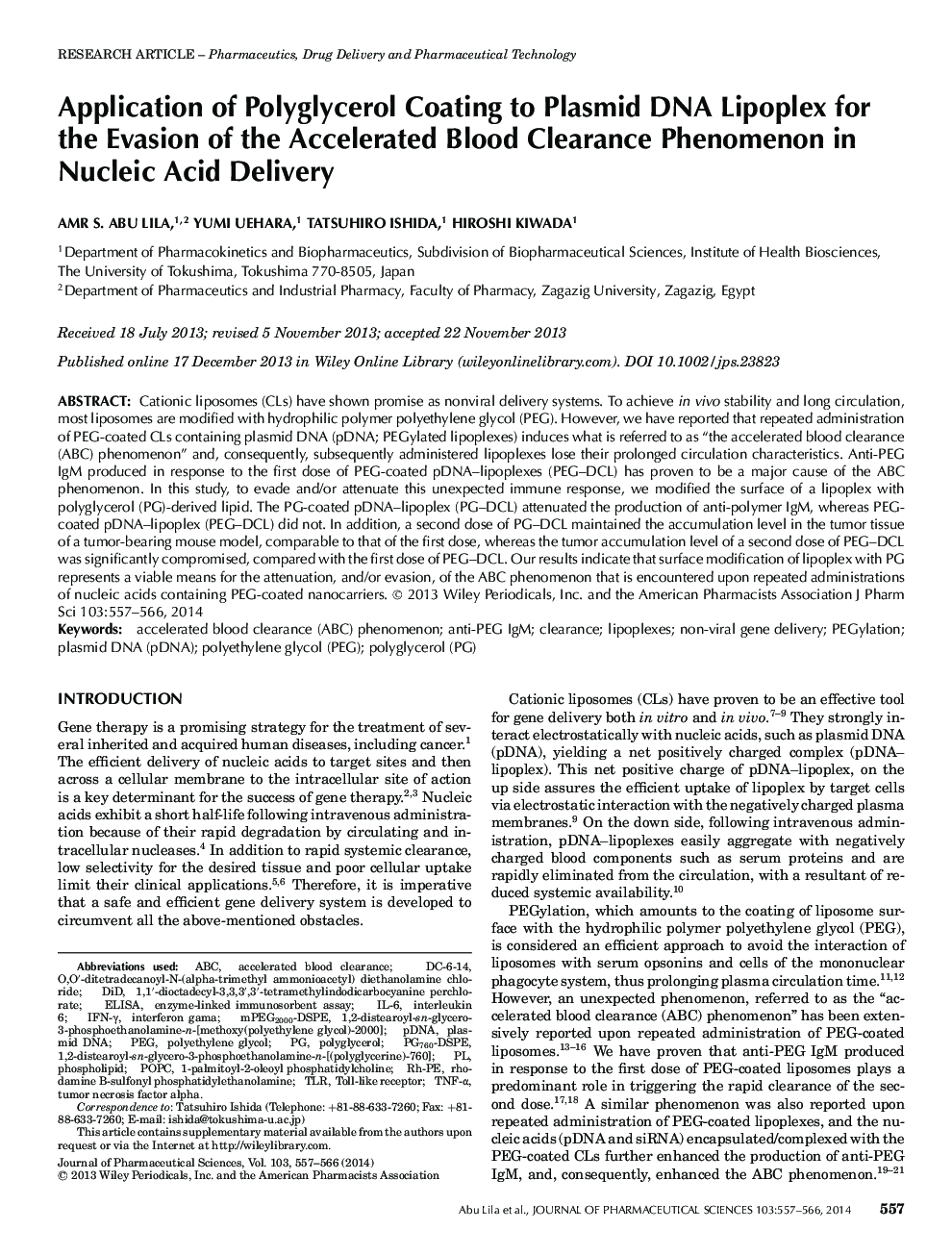| Article ID | Journal | Published Year | Pages | File Type |
|---|---|---|---|---|
| 10162602 | Journal of Pharmaceutical Sciences | 2014 | 10 Pages |
Abstract
Cationic liposomes (CLs) have shown promise as nonviral delivery systems. To achieve in vivo stability and long circulation, most liposomes are modified with hydrophilic polymer polyethylene glycol (PEG). However, we have reported that repeated administration of PEG-coated CLs containing plasmid DNA (pDNA; PEGylated lipoplexes) induces what is referred to as “the accelerated blood clearance (ABC) phenomenon” and, consequently, subsequently administered lipoplexes lose their prolonged circulation characteristics. Anti-PEG IgM produced in response to the first dose of PEG-coated pDNA-lipoplexes (PEG-DCL) has proven to be a major cause of the ABC phenomenon. In this study, to evade and/or attenuate this unexpected immune response, we modified the surface of a lipoplex with polyglycerol (PG)-derived lipid. The PG-coated pDNA-lipoplex (PG-DCL) attenuated the production of anti-polymer IgM, whereas PEG-coated pDNA-lipoplex (PEG-DCL) did not. In addition, a second dose of PG-DCL maintained the accumulation level in the tumor tissue of a tumor-bearing mouse model, comparable to that of the first dose, whereas the tumor accumulation level of a second dose of PEG-DCL was significantly compromised, compared with the first dose of PEG-DCL. Our results indicate that surface modification of lipoplex with PG represents a viable means for the attenuation, and/or evasion, of the ABC phenomenon that is encountered upon repeated administrations of nucleic acids containing PEG-coated nanocarriers.
Keywords
Related Topics
Health Sciences
Pharmacology, Toxicology and Pharmaceutical Science
Drug Discovery
Authors
Amr S. Abu Lila, Yumi Uehara, Tatsuhiro Ishida, Hiroshi Kiwada,
